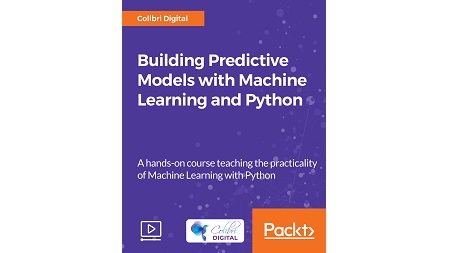English | MP4 | AVC 1920×1080 | AAC 48KHz 2ch | 2h 47m | 528 MB
Master the most popular Machine Learning tools by building your own models to tackle real-world problems
Machine Learning is no longer the inaccessible domain it used to be. There are over 100,000 Python libraries you can download in one line of code!
This course will introduce you to tools with which you can build predictive models with Python, the core of a Data Scientist’s toolkit. Through some really interesting examples, the course will take you through a variety of challenges: predicting the value of a house in Boston, the batting average of a baseball player, their survival chances had they been on the Titanic, or any other number of other interesting problems.
Once you master the content of the course, you can level-up your knowledge of the Python Data Analytics and Machine Learning stack by exploring these recommended libraries.
This course will guide you through the tools in the Python ecosystem that Data Scientists use to get results in a matter of hours – and with practice – in a matter of minutes. The best way to learn is through examples, and this course will guide you through all the steps needed to train and test your models by tackling several classifications and regression challenges.
By the end of the course, you will be able to take the Python Machine Learning toolkit we cover and apply it to your own projects to deploy models in just a few lines of code.
The course is structured around many small projects that introduce the tools you need one at a time and showcase some of the most common pitfalls of working with real-world data. It’s full of instructions, interesting and illustrative examples, and clear explanations. We share some useful tips and heuristics to help you diagnose problems you may encounter when applying Machine Learning to real-world projects, helping you plan a solution that overcomes the obstacle.
What You Will Learn
- Make each stage in building a Machine Learning based model easy and fast.
- Write and run your code inside Jupyter Notebooks to make sharing, debugging, and iterating on your code an absolute breeze.
- Read, explore, clean, and prepare your data using Pandas, the most popular library for analyzing data tables.
- Use the Scikit-Learn library to deploy ready-built models, train them, and see results in just a few lines of code.
- Evaluate your models to ensure they can be trusted!
- Cardinal rules you must follow to obtain a valid model you can rely on in the real world.
- Use hyper-parameter optimization to get the best possible version of each model for your specific application.
Resolve the captcha to access the links!
